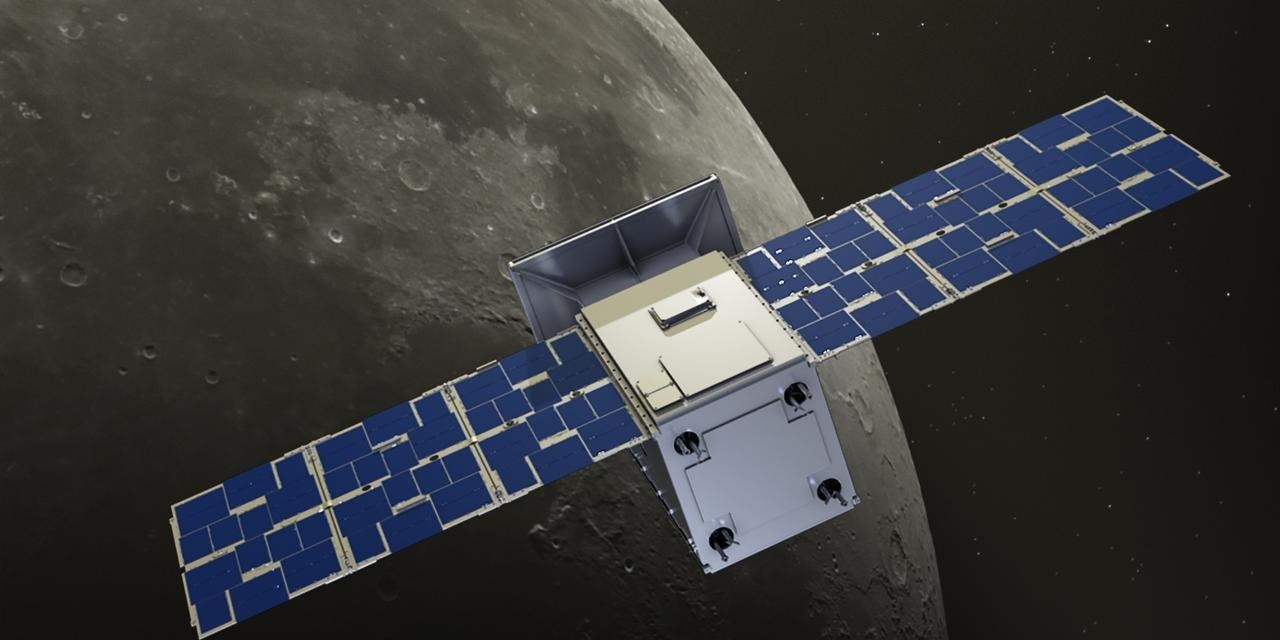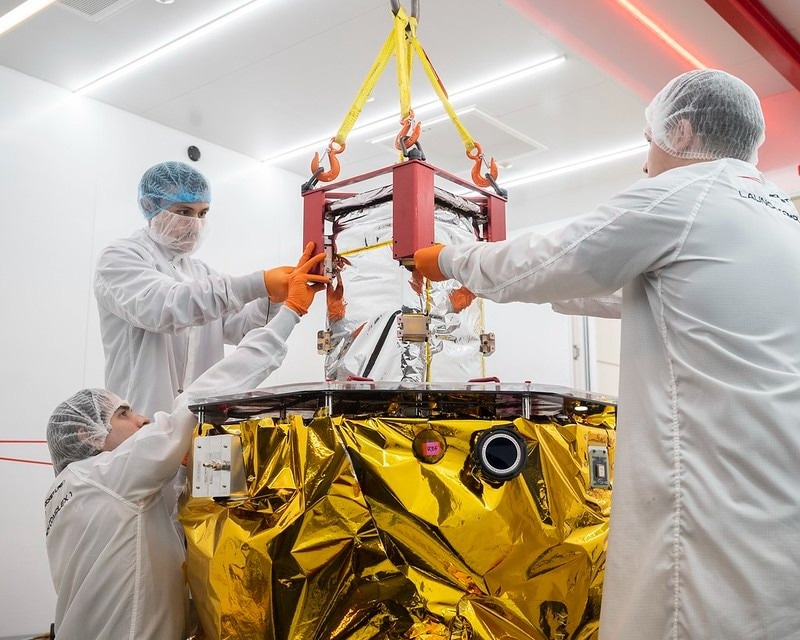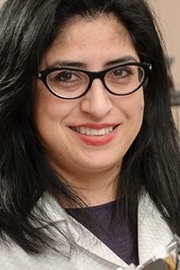My name is Ali Guarneros Luna and I'm a Senior Aerospace Engineer based at NASA Ames Research Centre in California's Silicon Valley. I work for the Space Technology Mission Directorate (STMD) under the program of SSTP, the Small Spacecraft Technology Program.
We manage different technologies that we want to mature from varying readiness levels. Some of the ones I am involved with are propulsion systems that can take us to deeper space, communications, radios, and also software developments to improve the autonomous systems.
What is the CAPSTONE mission, and why is it important in establishing a safe Lunar Gateway space station?
The CAPSTONE mission is a small satellite known as a cubesat, which are relatively small; CAPSTONE, for instance, is basically the size of a microwave and weighs around 25 kilograms.
This mission aims to go to the moon, characterize the near-rectilinear halo orbit, and mature some of the communication systems technology, specifically peer-to-peer communication, which is part of my work with CAPSTONE.
As CAPSTONE is a trailblazer for the Lunar Gateway outpost, we will verify certain technologies with this satellite before launching Gateway.

CAPSTONE © NASA
How did you become involved with CAPSTONE's autonomous navigation system CAPS?
NASA manages different programs which enable collaboration with the private sector and certain research centers. An opportunity to become involved with CAPS, which stands for Cislunar Autonomous Position System, became available through one of these programs. I came to the SSTP and ended up managing the CAPS program, overseeing the technical development and overall specification management.
What benefit can external partnerships like these bring to established organizations like NASA?
Partnerships with the private industry are a key factor in developing technologies. NASA cannot do it alone; we need partners like Aerospace and Rocket Lab to develop these technologies. We also partner with Universities because, a lot of the time, they have excellent ideas and it allows us to streamline the workflow to focus on the technologies we want to develop.
There is also the added benefit of being able to train future engineers and scientists that are going to foster the next generation of space exploration.
CAPSTONE’s path around the moon is referred to as a near-rectilinear halo orbit (NRHO), which, if successful, will be translated to the Lunar Gateway station. Why was this orbit chosen?
Following many calculation studies, this orbit is thought to be the most efficient and easiest to maintain for the Lunar Gateway. For example, we assume that the level of propulsion needed to maintain this orbit will be minimal compared to others. With the CAPSTONE mission, we can validate any uncertainties about the orbit's suitability.
NASA's CAPSTONE: Flying a New Path to the Moon
NASA's CAPSTONE: Flying a New Path to the Moon. © NASA
Autonomous navigation is immediately associated with unmanned vehicles, such as those used for marine exploration. How different is the design of autonomous software for spacecraft compared to Earth-bound machines? Are there any critical parameters you have to take into account?
There are certainly similarities, but I would say that key differences do exist. For instance, the environment is completely different. When you develop UAVs here on Earth, you rely, for example, on GPS and specific locations on the ground that we are really well known.
In space, there is no GPS. Instead, we can use stars as a reference to a location.
Ideally, CAPS will enable future spacecraft to determine their location independently, without relying on ground communication.
Why is this autonomy so important, and how might it help increase the advancement of exploration missions in the future?
This autonomy is very important, and CAPSTONE will be triangulating its location using other satellites. In doing so, CAPSTONE will be able to determine what is up and what is down - which normally you can't do in space because there is no up or down - and then it can actually change its location accordingly. With this, CAPSTONE can determine its location in relation to the moon, such as how close or how far.
The idea is to then take this concept and apply it to other satellites for other missions that will go to the moon. These satellites can then communicate with one another in a fully autonomous navigation system without the need for human interaction.
Independent validation will also help to increase the amount of valuable data ground-based antennas take in. Why is this?
It really depends on the maturity and the availability of people; usually, we have people behind the satellites to maintain them and obtain data. Through independent validation, the reliance on humans decreases and data can be obtained almost autonomously.
Naturally, there will be benefits because you do not depend on a person to be behind the wheel or an eight hour shift through the night. I believe it will definitely change how we can gather the information and data that we need and allow us to do it efficiently.

CAPSTONE Spacecraft Integration. © Rocket Lab
Rigorous testing and simulations are conducted before any mission, with initial missions like CAPSTONE taking place long before human-led missions are launched.
What more can be done to increase awareness of these foundation launches, and how might this help boost trust in long-distance space travel?
Any form of outreach to the public is great, especially early on through the different milestones, perhaps even for the different missions as we build them up. It also allows us to show the public how intensive it is to build something like CAPSTONE. Even though it's a small satellite, a lot of analysis, research and testing were involved in the development process to make sure that CAPSTONE can work and function in space.
In terms of long-distance space travel, missions like CAPSTONE help us to really understand uncertainties and answer any questions we have. CAPSTONE allows us to validate and understand the assumptions we have made, and allows us to modify them to make sure that we can safely send humans to the moon or conduct deep space travel.
From this perspective, I think that CAPSTONE is very unique because it will give us something we have never done before; that is, to validate some uncertainties before sending a human.
CAPSTONE is testing the water for us, and it's helping us to mature the technology that we need to advance future space exploration activites.
What is your favorite thing about working at NASA Ames Research Centre?
There are so many things that I can tell you, I really love working for NASA. Overall, I think my favorite thing is working with the students. We have great partnerships with universities and we have the honor of mentoring the next generation of engineers and scientists. In a way, this is both meaningful for both our industry and also for the economy of the United States.
So for me, I really appreciate the opportunity given to not only inspire but also help the students to reach their potential.
About Ali Guarneros Luna
 Ms. Ali Guarneros Luna is a senior NASA aerospace engineer supporting the Small Satellite Technology Program (SSTP) at The Space Technology Mission Directorate (STMD), managing Tipping Points program and other small satellites.
Ms. Ali Guarneros Luna is a senior NASA aerospace engineer supporting the Small Satellite Technology Program (SSTP) at The Space Technology Mission Directorate (STMD), managing Tipping Points program and other small satellites.
Prior to this position, Ali has been involved in many small spacecraft programs including being the Mission Manager of the Technology Education Satellite, (TechEdSat), Deputy Manager for Network & Operation Demonstration Satellite (NODES), System Engineer for Synchronized Position Hold, Engage, Reorient, Experimental Satellites (SPHERES) national lab and many other at NASA Ames Research Center. She has made significant contributions as a member of the SPHERES Engineering team, a group that helps scientists, companies and government institutions from all over the world access the highly advanced robot platforms that are located on the International Space Station (ISS), as well as the 1st American satellite deployed form the ISS, TechEdSat.
Ali grew up in Mexico reading about the space shuttle missions and decided she wanted to study Aerospace Engineering. At 14, Ali immigrated to California. After graduating from high school still mastering the English language, she attended San Jose City College where she obtained an A.S. degree and then transferred to San Jose State University (SJSU), Department of Engineering. She graduated from SJSU with a B.S. in Aerospace Engineering and began her career as an intern with NASA Ames Research Center working with the Center's Chief of Technology. Prior to her move to Code PX, she was a lead for safety certification and tests, certifying equipment for flight.
Ali is an active member of the community, participating in multiple STEM related associations, mentoring students ranging from elementary school to the university level. Ali received both a bachelor’s and master’s degree in Aerospace Engineering from San Jose State University. In October of 2013, Ali was honored by the Hispanic Engineering National Achievement Awards Conference (HENAAC) Great Minds in STEM with an award Luminary Honorees, in 2014 she was awarded by the office of the International Space Station (ISS) Space Award for her work to SPHERES, MRMSS, NODES, TechEdSat Series. In October 2015, Ali was awarded the NASA Honor Award - Equal Employment Opportunity Medal. In February of 2018, Ali was awarded the 2017 Space Technology Award for the Project Nodes.Ali’s international recognition includes the Ohtli Award or Reconocimiento Ohtli, presented to her May 3, 2018. In October of 2018, Ali received the Women of Color (WOC) Outstanding Technical Contribution in Government Award.
Disclaimer: The views expressed here are those of the interviewee and do not necessarily represent the views of AZoM.com Limited (T/A) AZoNetwork, the owner and operator of this website. This disclaimer forms part of the Terms and Conditions of use of this website.